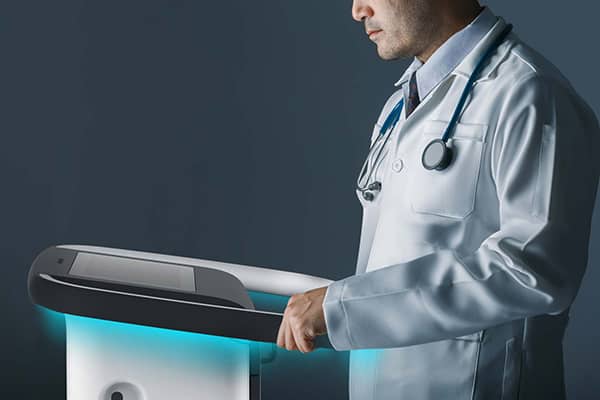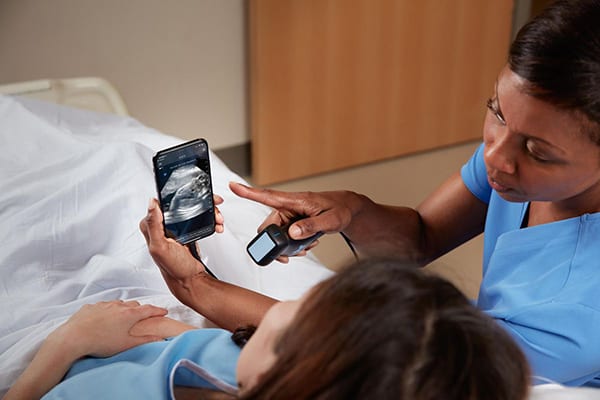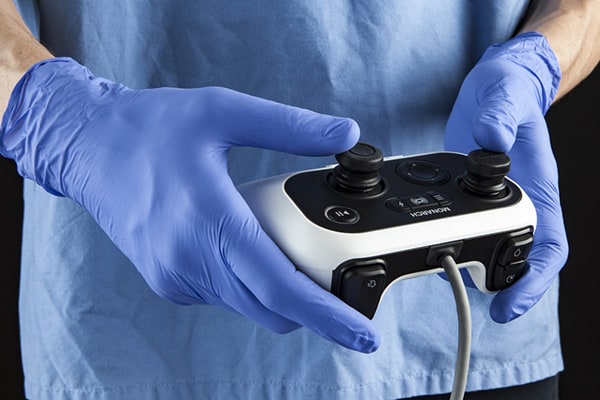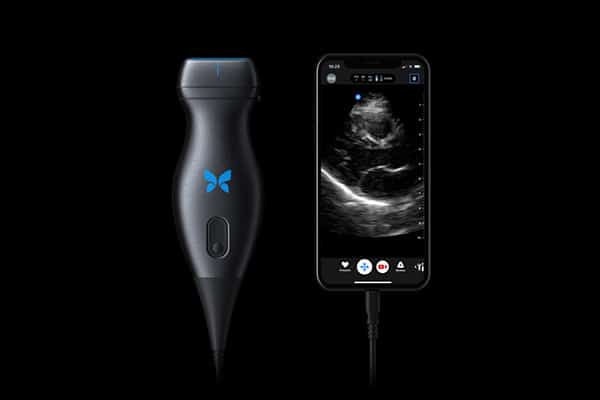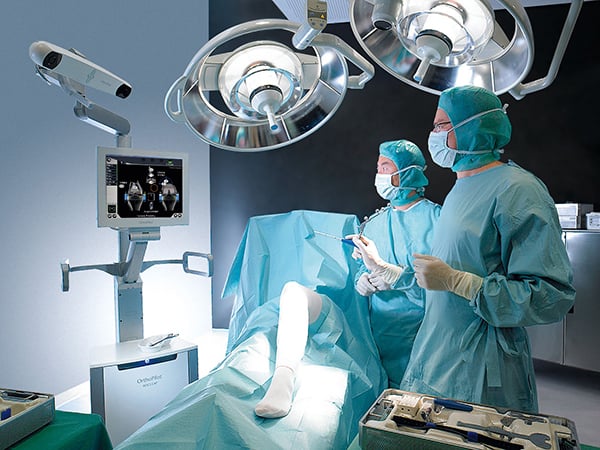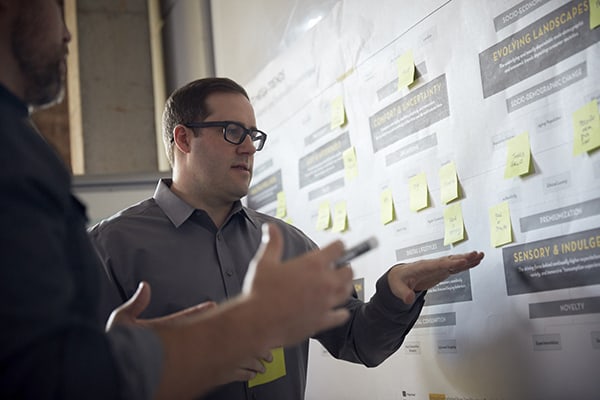EMERGING HEALTHCARE INDUSTRY TRENDS #7: Human-Centered Healthcare Design
In this ongoing series on emerging healthcare trends, we take a look at what is to come in health tech — both in 2021 and beyond. In this blog, we turn to design. Though it may seem extraneous or unrelated to healthcare, design isn’t optional anymore. Here, we explore why consumers and clinicians alike expect well-designed products that reduce patient anxiety, increase efficiency, are intuitive and easy to use, improve patient outcomes, and change health tech for the better.
Over the past year, already in-motion healthcare trends have accelerated due to the COVID-19 pandemic health crisis, making it vital for practitioners and manufacturers to understand and respond to new and upcoming demands. In this thirteen-part blog series, we look at the trends shaping today’s healthcare industry and what you can expect in the coming year and beyond.
What is good healthcare design?
Good healthcare design is more than just a competitive differentiator — increasingly, it’s an expectation from both patients and health systems. More and more industries understand the business value of design; good design solutions are now expected, with those expectations rapidly bleeding into the healthcare space. Companies that embrace healthcare design put the patient and clinician at the center of the design process to differentiate themselves from cumbersome competitors unlocking gains in market share, access, and reimbursement.
The key drivers of healthcare design are:
– Consumerization of healthcare: Access to healthcare in new consumer-led channels is becoming increasingly prevalent, and as a result, medical devices and their interfaces are expected to meet both patients’ and doctors’ expectations for approachable, intuitive design.
– Investing in design as a differentiator: Providing a superior product and a better user experience can help differentiate one product from another in this increasingly competitive landscape.
– Increasing design literacy: As surgeons and patients increasingly experience the benefits of good design in other areas of their lives, they are demanding the same intuitive design in their work lives and healthcare environments. By adopting established patterns of interaction and product behavior when developing new medical devices, manufacturers can lessen the learning curve to achieving competency.
– Patient-provided treatment plans: Using apps has become as natural as breathing. Self-guided, patient-regulated treatments administered via smartphone and managed by a remote physician will become more prevalent and a critical part of future patient care and wellness.
Why healthcare design matters
Historically, consumer product companies who invested heavily in design through in-house design professionals or hired a design firm have outperformed competitors by 211%. Investing in innovation in other industries has paved the way for medical device suppliers to follow suit, prioritizing design and usability has netted similar business outcomes in medical device design. Devices and interfaces are constantly evolving, and a wave of human-centered healthcare design is turning sterile clinical artifacts into aesthetically appealing, fit-for-purpose objects that improve usability, relieve stress, and create better health outcomes.
Opportunity: Consumer-like Product Design
As healthcare becomes more consumerized, medical centers and hospitals are increasingly turning to design to improve patient experiences and demonstrate their superiority. With the increasing visibility of medical products and the higher standards set by consumer product design, a precedent has been set for medical devices and healthcare facilities to be visually appealing, future-thinking, and patient-focused.
The Monarch controller is an excellent example of consumer products’ influence on health tech — an extensive study in ergonomics and design influenced by gaming controllers helped shape the device’s form and user interface. Auris, the company behind Monarch, tapped Astro Design, a consumer product design company, to help design a supremely usable device that provides a similar controller-like interface that physicians can use to navigate the flexible robotic endoscope. The intuitive user experience offers improved reach, vision, and control.
Medical imaging devices in the healthcare environment are usually pretty bulky and historically only considered the ergonomics of the Healthcare Providers (HCPs), rather than the patient being scanned. Butterfly iQ has changed this, taking the patients’ perception and experience into account as a critical part of the scan. A smartphone app also allows for consumer-level usability of a professional medical device, while the form puts patients at ease, delivering a more positive experience for both HCPs and patients.
The Opportunity: Easier adoption with hyper-intuitive physical and digital design
Medical devices are growing increasingly complex, and as new design solutions are introduced, they must not require end-users to adopt new complex mental models. Design should, where possible, leverage existing habits, practices, and repertoires to ensure that devices, interfaces, and services are intuitive. The more intuitive the interface or device is, the easier it will be to adopt, which will help flatten the learning curve and minimize the training load for health systems.
The DaVinci Robotics system creates a hyper-intuitive, seamless experience for surgeons that makes extremely complex technology easy to use as performing surgery with their own hands. With an intuitive human-computer interface, the DaVinci system minimizes the need to “retrain” the brain, making more minimally invasive procedures possible by lowering the barriers to adoption.
With a similarly intuitive design solution, the OrthoPilot system by B.Braun uses real-time motion tracking to raise the standard of navigated orthopedic surgical precision to a new level. Using the Multitool, the OrthoPilot’s human-machine interface for the orthopedic navigation system is controlled through an intuitive gestural interface. Surgeons can use the camera-based system to spatially track the handheld device, allowing the system to visualize the position of the tool and track a range of motion during the procedure. The interface presents the information as a set of visualizations and digestible infographics, making it easier for the surgeon to focus on patient well-being.
The Opportunity: Improved hospital design via natural interfaces
As technology improves, surgeons and clinicians have increased access to more powerful tools to do their jobs better than ever before. The surgical space is an environment in which usability is paramount.
OR’s are crowded as it is usually crowded, and gloved hands can make touch interfaces difficult to interact with (while also creating issues with sterility). Voice and gestural interfaces are being implemented in the built environment, allowing surgeons and their teams to interact with these devices in new ways that make sense and improve surgical workflows.
Leap Motion, for example, employs touchless hand gestures to allow its users to interact with its interface with ease. The company found its beginnings in the consumer space but expanded into the surgical sector, allowing surgeons to remain bedside by using hand gestures to control OsiriX imaging of a patient during surgery.
Voice control has enormous promise in the healthcare environment. In a study conducted by Microsoft, a voice interface was found to be as intuitive as gestural control during the deployed cardiac surgery. More importantly, it was found that access to both types of interfaces allowed for even greater flexibility for surgeons in all kinds of use cases commonly encountered in the Operating Room (OR). The Microsoft study suggests there isn’t just one answer but that the real value is providing surgeons and clinicians with an ecosystem of tools to match their diverse OR requirements.
LET THRIVE HELP YOU KEEP A PULSE ON THE LATEST HEALTHCARE INDUSTRY TRENDS
Keeping up to date with trends like human-centered healthcare design is is vital to running a successful health tech business. The landscape is changing quickly, and our series of trend blogs will be exploring each of these new technologies within medical practice and how they are shaping the healthcare ecosystem. And don’t miss the previous articles in this series for the trends that we’ve covered so far.
THRIVE is an expert healthcare technology consultant with years of proven experience in the industry. We’d love to talk more about how we can help you respond to the shifting trends so that you can protect your business now and into the future. Contact THRIVE today.
RELATED POSTS
If you missed any of the previous posts in this blog series on the future trajectory of healthcare, you can find them here:
Week 1: The Shifting Point of Care
Week 2: The Hyper Personalization of Care
Week 3: Expanding the Continuum of Care
Week 4: Patient Empowerment
Week 5: Physician Empowerment
Week 6: Orchestrating Operating Room Efficiency
Week 8: Improving Medical Device UX Design
Week 9: Improving Contextual Design & Cognitive Empathy
Week 10: Enhanced Data Visualization Tools
Week 11: The Increasing Prevalence of Robot-Assisted Surgery
Week 12: Behavioral Design for Medical
Week 13: Humanized Patient-Provider Interactions


